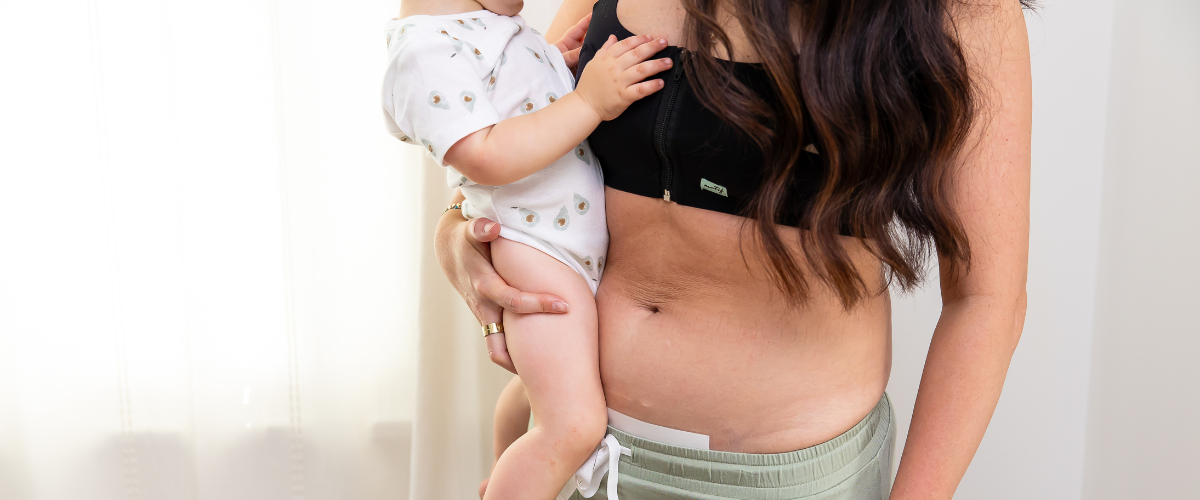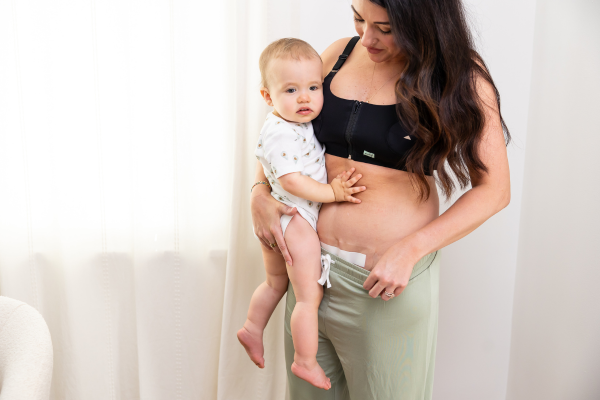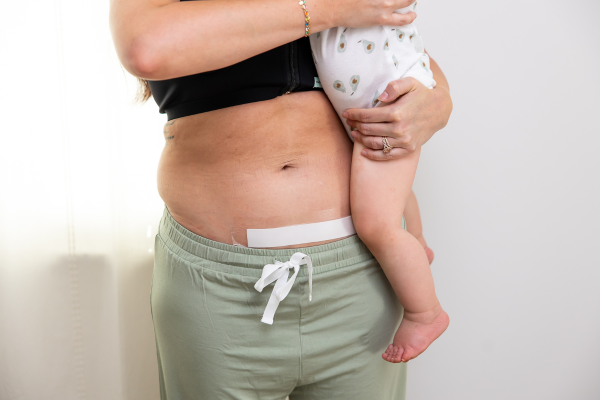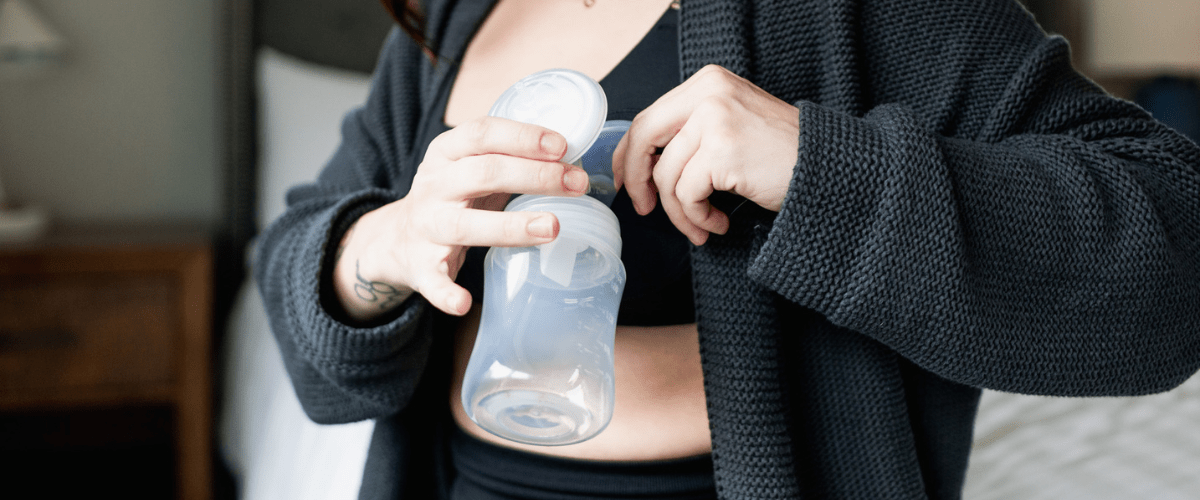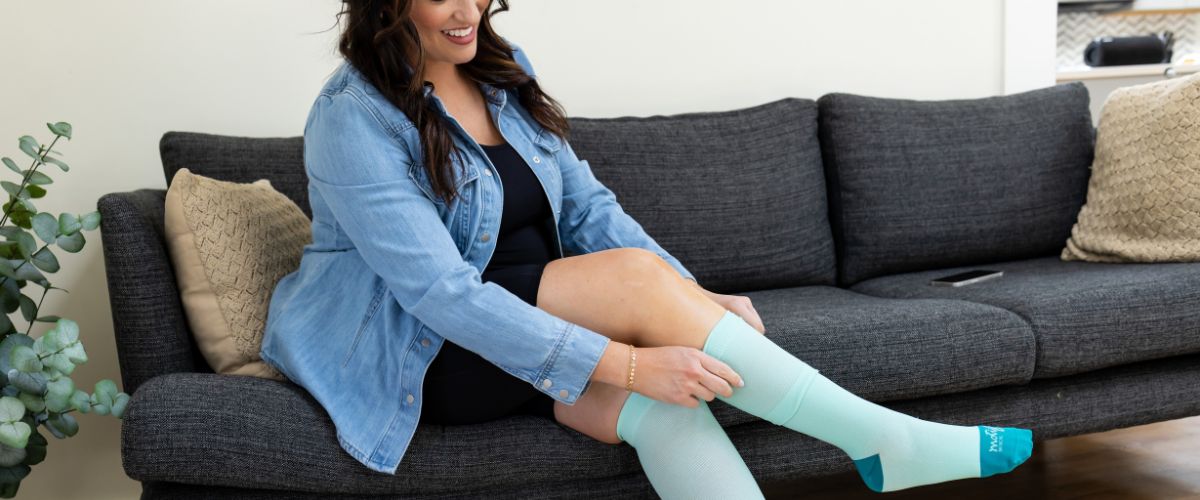IN THIS ARTICLE:
Cesarean Recovery
Bringing a new life into the world is a miraculous experience, but it also comes with a unique set of challenges, especially if you delivered your baby by cesarean section (C-section). Whether you had a planned surgical birth or the events of labor led you to having a cesarean birth, recovering from a C-section involves more than just physical healing--it requires holistic self-care that encompasses your body, mind, and spirit. Here’s some tips to help you nurture yourself during the postpartum if you gave birth via C-section:
Physical Recovery
Prioritize Rest
Your body needs time to heal, not just from birth but also from growing a whole new person inside you for the last nine months. Getting plenty of rest as part of your postpartum care will be essential to your recovery and healthy healing of your c-section incision.
Embrace restorative practices, such as napping letting other people help with household chores because there’s really only two things you need to do in the postpartum: rest and feed your baby. Let your support system worry about all of the other details.
Gentle Movement
While rest is crucial, gentle movement is also beneficial to the recovery process. Gradually introduce light exercises recommended by your healthcare provider, such as stretching, pelvic floor exercises, and walking to aid circulation and promote healing. Shoulder stretches and practicing diaphragmatic breathing in the morning and at night can help reconnect your mind and body as well as center yourself emotionally. Doing calf stretches several times a day promotes blood flow to your feet and ankles, which can help prevent blood clots.
Whenever you’re moving your body after a cesarean birth, be mindful of your incision site. You can use Motif Medical’s C-Section Dressing System to promote healing and provide support to your tissues as you start moving. This three-step bandage system aids in reducing infection and healthy scar formation. You can also consider their Postpartum Recovery Garment for additional compression and support. These FDA listed garments are designed for use after a cesarean or vaginal birth and help reduce vaginal bleeding and cramping, while providing support for the pelvic floor, hips, back and abdomen as you recover from giving birth.
Nutrition and Hydration
Nourish your body with a balanced diet rich in nutrients, especially if you're breastfeeding. Focus on protein and fiber to cultivate a healthy microbiome and facilitate healing at your incision. Hydration is key for recovery and milk production, so aim to drink at least 3 quarts of water throughout the day. This will provide what your body needs to make adequate amounts of breastmilk and help prevent constipation. Because of the medications that are used during a cesarean delivery, drinking plenty of fluids isn’t always enough so you will probably be prescribed a stool softener and I also recommend taking that as part of your c-section recovery. You really don’t want to be constipated right now!
Don’t shy away from your pain medication in the first few days. Most people find that over-the-counter pain relievers work well to keep them comfortable. You can alternate acetaminophen and ibuprofen or just take the one that works best for you. A heating pad can be another useful tool to help with postpartum cramping and pain relief. The afterpains do tend to get worse with each baby, so it’s good to be prepared!
Keep taking any supplements you were taking before you gave birth. Especially if you’re breastfeeding because you’re still feeding two people, your little one is just on the outside now! Some people find it helpful to consume their placenta through placenta encapsulation. If this is something you’re interested in, I recommend finding a practitioner to do this in your second trimester so they can be on-call and prepared to get your placenta after the birth.
Emotional Well-being
Seek Support
Emotions can run high in the postpartum, especially if your birth did not unfold as you’d envisioned. Surround yourself with a supportive network of family, friends, or seek guidance from support groups. Share your feelings and concerns; sometimes, simply expressing yourself can be immensely therapeutic. If you like to journal, there are some guided journal books that can help you process your birth experience or you can write down your feelings and thoughts on your own. Writing it down can also be a therapeutic way to work through your feelings without stuffing them down inside. Even the positive emotions need to be shared! So talk, write, or record your feelings during this time.
Practice Self-Compassion
Be gentle with yourself. Embrace the changes in your body and understand that healing takes time. Don’t listen to anyone who says there’s some sort of timeline for when you should recover after birth or be ready to pick up some of your former activities. Birth is a huge life transition and it’s normal for your days and weeks to look different on the other side. Allow yourself to feel a range of emotions without judgment.
Everyone heals at a different pace and some people don’t have a desire to do all of the things they did before they gave birth.
Mental Health Check-ins
Pregnancy and childbirth can impact mental health. It’s normal to have the baby blues in the first two weeks postpartum. These are feelings of depression or anxiety that happen off and on in during the day. There are a lot of hormones that are shifting and coupled with your new responsibilities and the inconsistent sleep, it’s completely normal to have moments when you feel overwhelmed. But keep an eye on your emotional well-being and seek professional help if you notice that your feelings of sadness or anxiety are lasting longer or if you’re unable to eat or sleep like you normally would. Any concerning changes in your mental state warrant a call to your provider, just to check in.
Holistic Healing
Mental Health Check-ins
Consider holistic therapies like acupuncture, aromatherapy, or massage (once your doctor gives the green light) during your postpartum recovery. These supplemental support professionals can aid in relaxation, help reduce stress, and promote overall well-being while you adjust to your life as a parent.
Mindfulness and Meditation
Engage in mindfulness practices or meditation to help manage stress and connect with your inner self. Even a few minutes of deep breathing can have a calming effect. Deep breathing also helps heal your pelvic floor and once your incision is healed it can promote elasticity in the area around it. If you haven’t practiced mindfulness or meditation before, consider downloading an app to help you get started.
Bonding Time
Cherish moments with your baby. Celebrate the day you all are going home. Keep doing skin-to-skin contact, cuddling, and bonding activities so you can release oxytocin, which is the "love hormone." It fosters a deeper connection between you and your loved ones and aids in emotional healing for both you and your new baby.
Follow-Up Care
Postpartum Check-ups
Make sure you attend scheduled postpartum appointments with your healthcare provider. Discuss any concerns or queries about your recovery during these visits. If you are having signs of infection, such as fever, heavy bleeding, or foul smelling vaginal discharge always call your provider. You’ll also want to reach out to them right away if you experience chest pain or have symptoms of postpartum depression.
If your provider doesn’t have regular follow ups in the first few weeks postpartum, consider finding a postpartum group to join. These groups can be a source of support and information while you figure out your new routines.
Gradual Resumption of Activities
Listen to your body and gradually reintroduce daily activities. Avoid lifting heavy objects or engaging in intense workouts until your healthcare provider gives the go-ahead. When you do resume activity, listen to your body. If you feel any weird aches and pains while you’re working out, it could be that you’re not ready for that level of physical intensity yet.
If you have concerns about your pelvic floor, particularly if you are leaking urine when you sneeze or cough or if you have a heavy feeling in your pelvis when you’re up and about, contact a pelvic floor physical therapist for an individualized assessment. Contrary to popular belief, while it is not uncommon to leak after birth, it isn’t normal and there are exercises you can do to strengthen your pelvic floor and stop that from happening!
Diastasis Recti is when the abdominal muscles don’t completely come back together after you give birth. This doesn’t happen right away and can take up to 12 weeks to heal on it’s own. If after 12 weeks postpartum you are still experiencing abdominal weakness or can feel a separation between your ab muscles, it might be time to consult with a profession.
Professionals can do a full assessment and give you safe, targeted exercises to promote healing of your abdominal muscles.
Patience and Persistence
Healing after birth is a journey and a C-section is a major surgery. Especially when you’ve experienced both events, you need to give yourself time to heal. It will not happen overnight and you’ll likely need even more than the standard 6 weeks after birth. Embrace patience and persistence in your self-care routine, understanding that every small step you take is a significant stride toward recovery.
A C-section birth is a remarkable experience that requires careful and comprehensive postpartum self-care. Prioritize your physical, emotional, and spiritual well-being during this transformative period. Remember, taking care of yourself isn't selfish--it's necessary for you to be the best caregiver for your newborn. Embrace this journey of healing and self-discovery, and celebrate each milestone along the way.
Information provided in blogs should not be used as a substitute for medical care or consultation.


